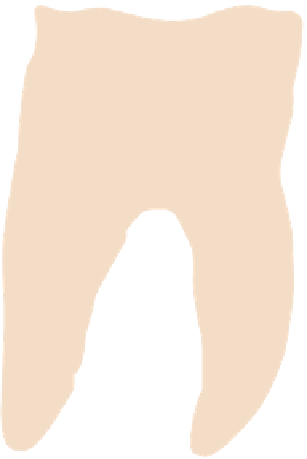Biomedical Engineering Reference
In-Depth Information
15.1
TOOTH MATERIALS
The human mouth provides a highly complex environment for the teeth
[1]
. There are variations in a
number of factors. These include temperature, which can be between below 0°C and 70°C, the pH,
which can vary from acid to alkaline, the chemical composition, which is highly variable, humidity, the
mechanical impact and pressure. The conditions are highly dependent on what is being consumed and
chemicals released in the mouth. The human teeth need to be able to withstand such a wide range of
chemical, thermal, and mechanical conditions. The human teeth are hard calcified structures attached
to the upper and lower jaw for cutting, grinding, and chewing actions
[2,3]
. A typical tooth consists of a
crown sticking out of the jaw, the exposed neck area, and root extending down into the socket in the jaw.
The surface of the tooth is covered with enamel with dentine underneath and pulp cavity in the
center. There are numerous sensory nerve endings. A typical tooth structure is shown in
Figure 15.1
.
Over years of repeated use and often lack of proper care, the teeth get damage due to acid erosion and
wear. Cavities develop which require fillings and some teeth to be removed during a lifetime. These
can be replaced by artificial teeth which need to also withstand the severe environment that they will
encounter
[4,5]
. They need to be tough and strong to resist fracture and abrasive forces encountered
Enamel
Dentine
Pulp
Cementum
Periodontial
ligament
Jawbone
FIGURE 15.1
Structure of the human tooth
[2]
.







































































































































































































